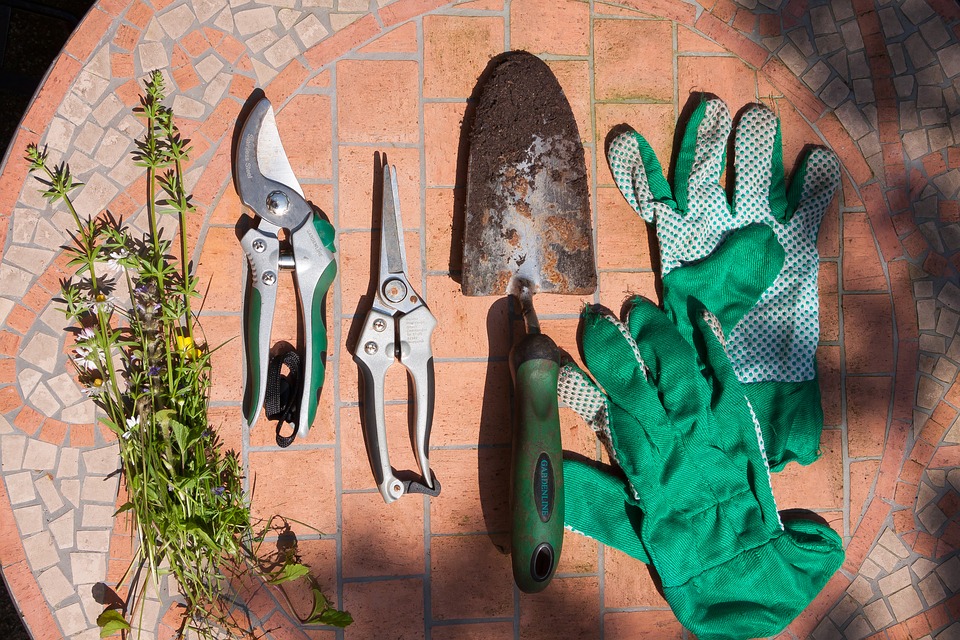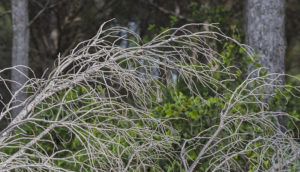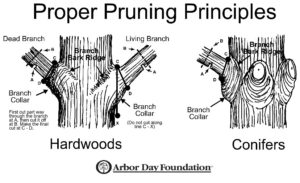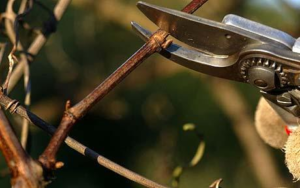
It’s Pruning Time!
Spring Pruning in Your Garden Landscape
It might be too early to plant in your garden but there is activity going on out there! While looking around your garden for the first signs of snowdrops, crocus and daffodils be sure to look at your trees and shrubs for signs of winter damage. If you find you need to prune your trees and shrubs, this is the best time of year to do so – while trees and shrubs are still dormant.

If you live in an area with a cold winter climate, many of your trees and shrubs go dormant in the late fall through the winter. This is a good thing! Your trees and shrubs are acclimated to low winter temperatures, snow cover, ice and winter winds. But anything in the extreme may cause problems. Heavy, wet snow and ice, as well as high winds can break branches. Fluctuating temperatures during thawing and freezing can crack tree bark. Rapidly falling temperatures after a warm day can cause winter burn on evergreens. Spray from road salt can cause browning and die back on trees and shrubs near treated roads or walkways.
Investigate: First inspect your trees and shrubs for dead, broken or diseased branches. If you are not familiar with diseases of trees and shrubs you can concentrate on just dead or broken branches – your trees and shrubs will benefit greatly from proper removal of these. Proper pruning can help restore the health and vigor of trees and shrubs.

Tools: You will likely need only hand pruners, a pruning saw and loppers. A pole pruner is helpful for reaching branches up high.
Safety First: Always wear proper protective gear when pruning. At a minimum, you will need gloves and protective eye wear. If you will be removing branches positioned above your head, wear a hard hat. With any extensive pruning of large or high up limbs, it’s a good idea to work with a companion. If a potential pruning cut is beyond your expertise, it’s a good idea to hire a trained professional arborist.
Trees
Making a Proper Pruning Cut – A tree or shrub can usually “heal” or seal over a wound from a properly made pruning cut, but can become diseased or even die from incorrect pruning. Take your time! A good gardener or arborist takes as much time as need to assess a situation before making any cuts. Here is a diagram from the Arbor Day Foundation for making proper pruning cuts:
 Steps:
Steps:
- Assess – determine which branches need pruning. Try not to cut away more than 10% of the total canopy of the tree or shrub.
- Carefully plan your cuts. Cuts A and B in the diagram are preliminary reduction cuts – they reduce the size and weight of the branch you are eliminating. Cut A – the under cut – helps keep the branch from ripping off the tree. Cut B – the reduction cut – removes the weight of the branch.
- Locate the branch collar – a swollen area at the base of the branch where it attaches to the tree. The branch collar eventually will grow over and seal a proper pruning cut.
- Final cut – plan your last cut to be just slightly in front of the branch collar. Cutting into the branch collar will impede healing; cutting too far ahead of the branch collar and the tree will not be able to seal over the cut.
Shrubs
Pruning shrubs is a little different than trees. Although a woody plant, shrubs are generally shorter than trees and have multiple stems emerging from the ground. Many shrubs actually require vigorous spring pruning. Roses, for example, generally bloom on new grow. Cutting back rose stems or “canes” encourages new growth and flowering. In general, make pruning cuts on shrubs just beyond a healthy bud.

Types of Pruning Cuts in Shrubs
Heading Cuts – Make these pruning cuts generally at the end of shrub branches. Heading cuts promote lateral growth and help a shrub look fuller. Make a heading cut above a bud and at a 45⁰ angle.
Thinning Cuts – This type of pruning cut can help rejuvenate an older shrub with dense twigs and branches. Make thinning cuts much like you would when pruning a tree – cut back to the main stem, or even just above the ground. With older shrubs in need of rejuvenation, you may cut back about one-third of the total stems of the plants.
Give it a Try!
Many gardeners and home owners are nervous about pruning, worried that they might damage or destroy their trees and shrubs. Take your time. Use the correct tools. Plan your pruning cuts. With some knowledge and care, you can improve the health and vigor of the trees and shrubs in your garden landscape.


Sorry, the comment form is closed at this time.